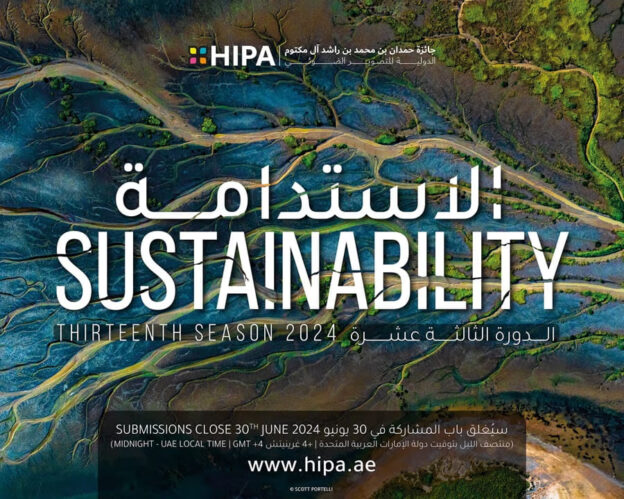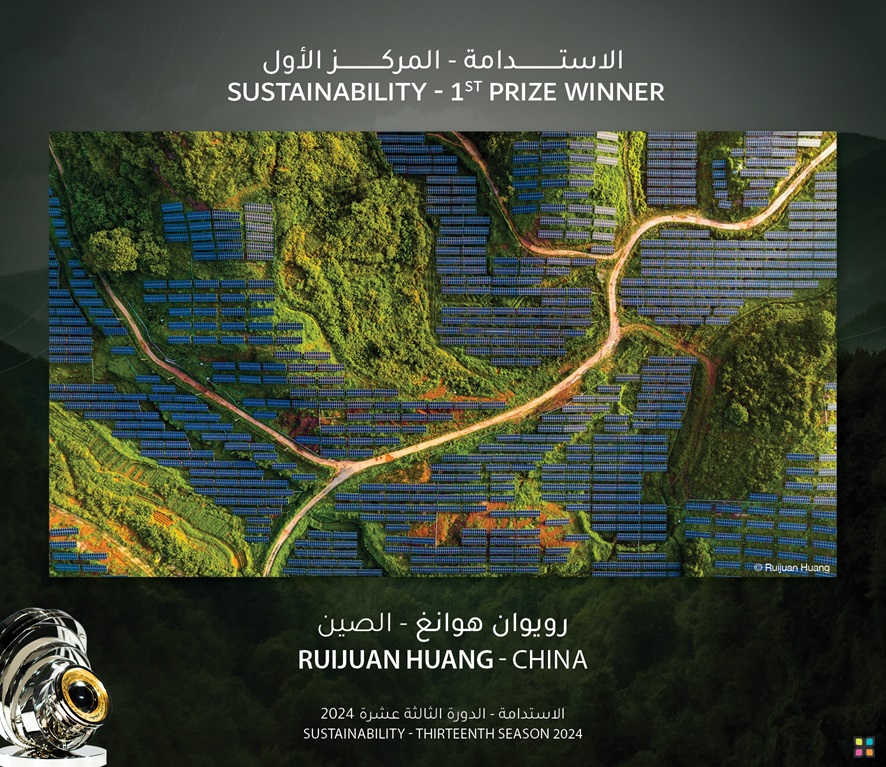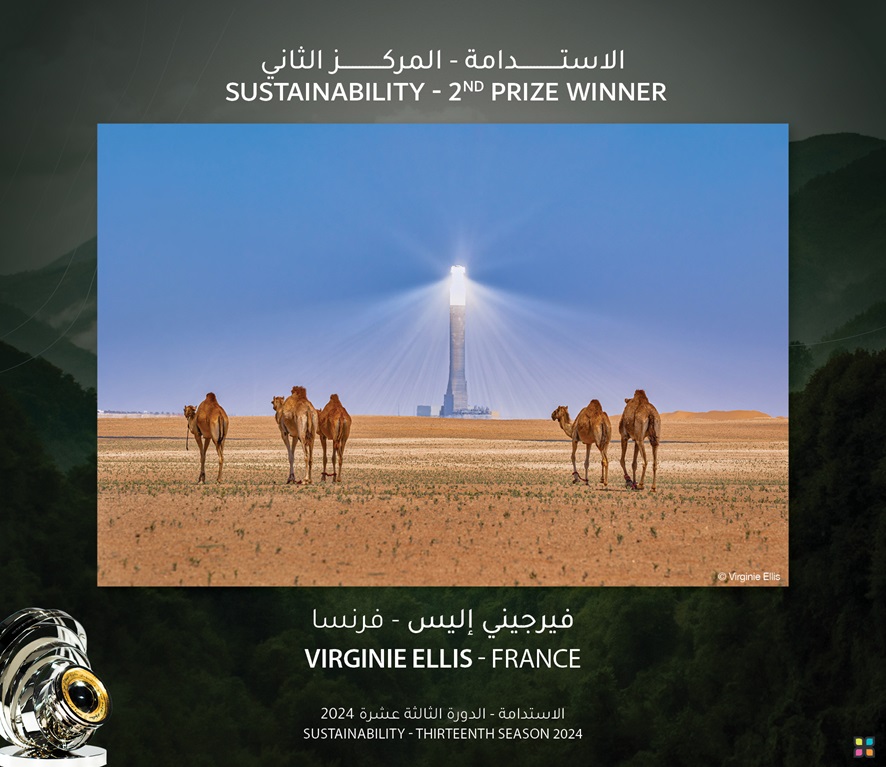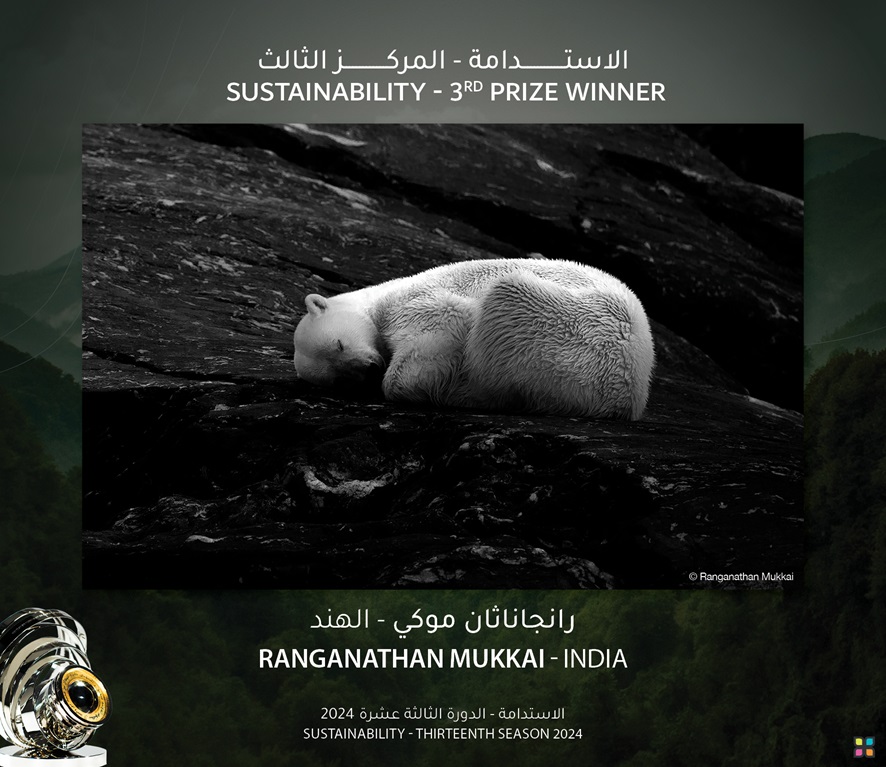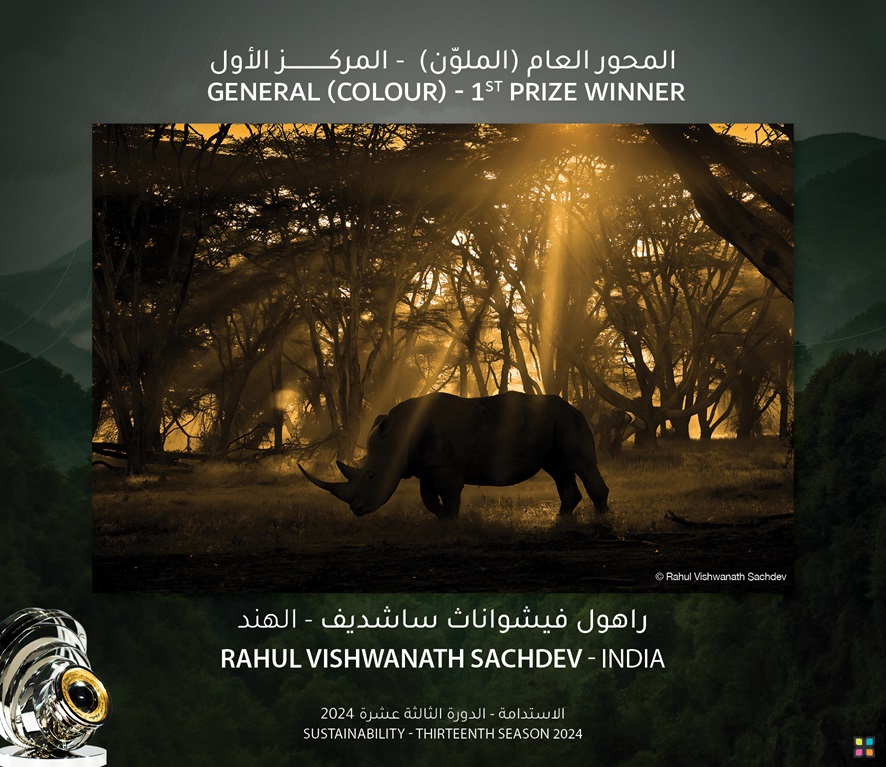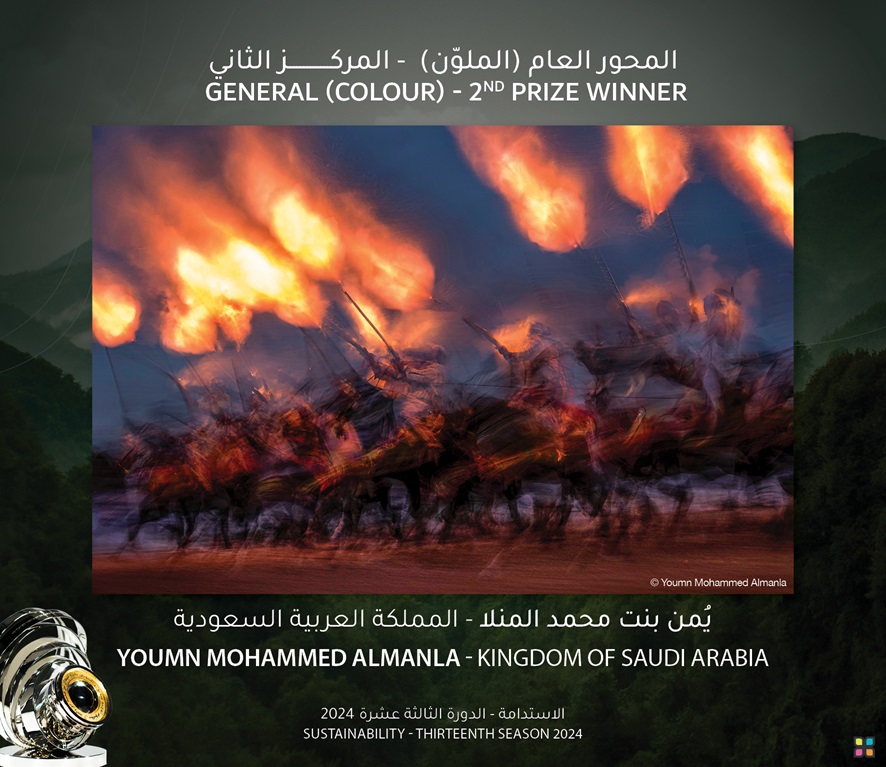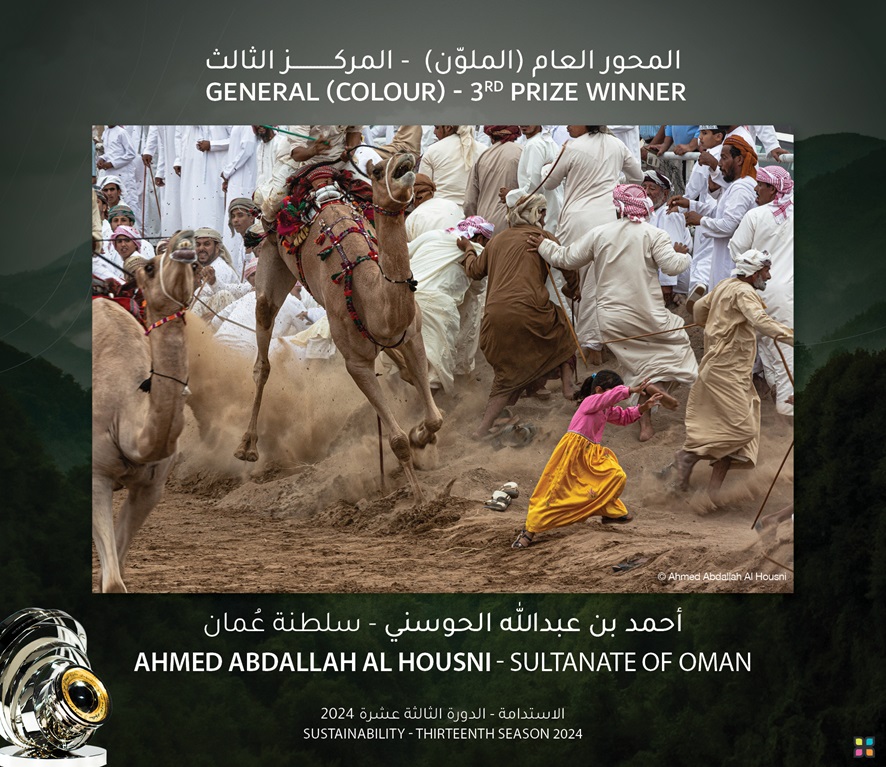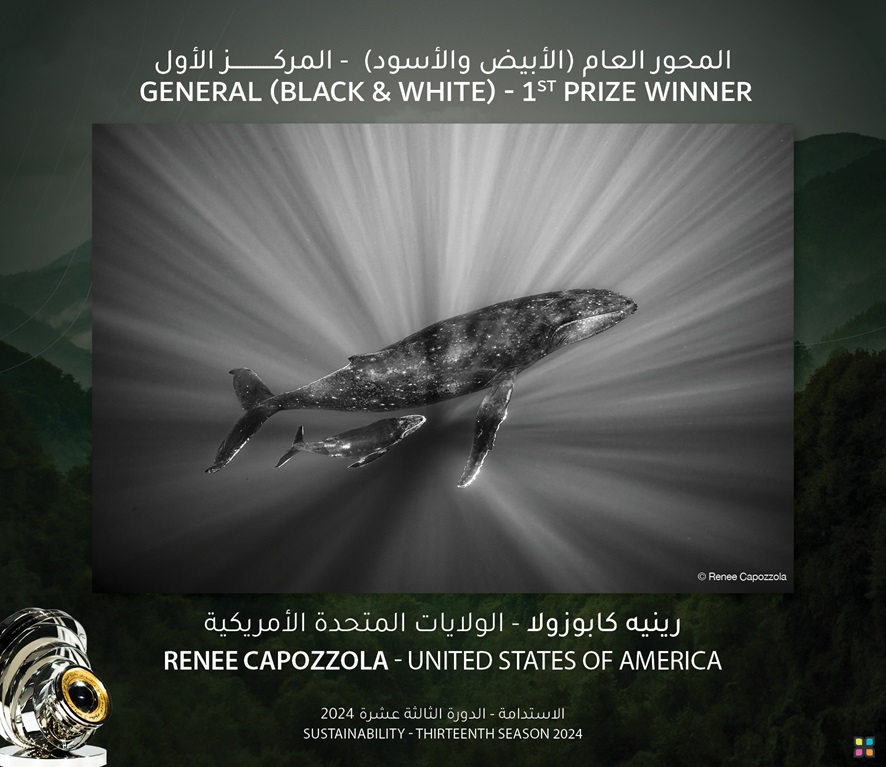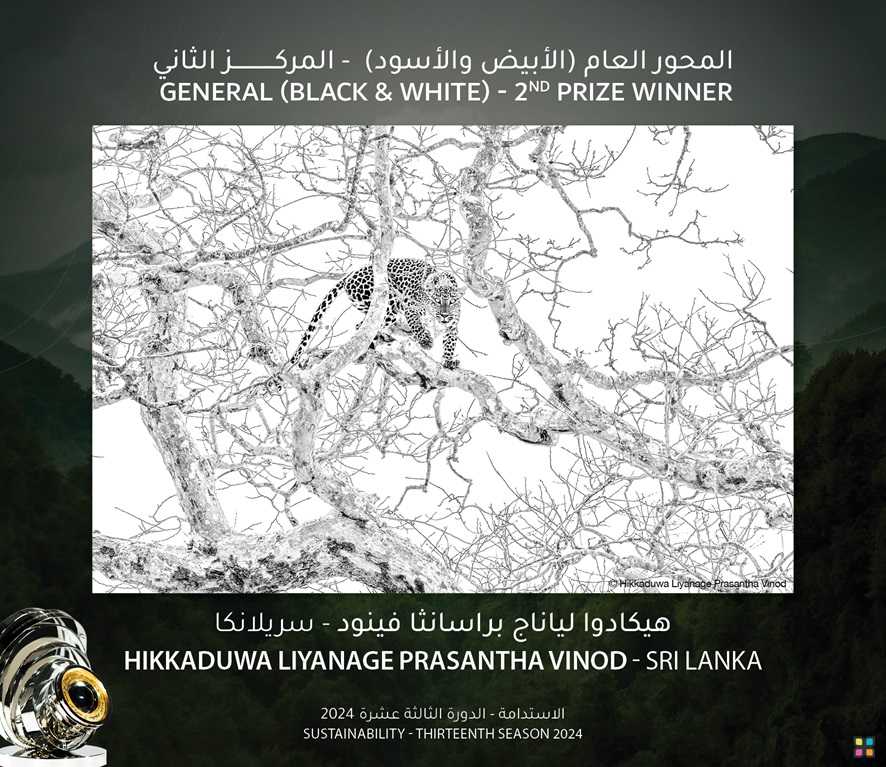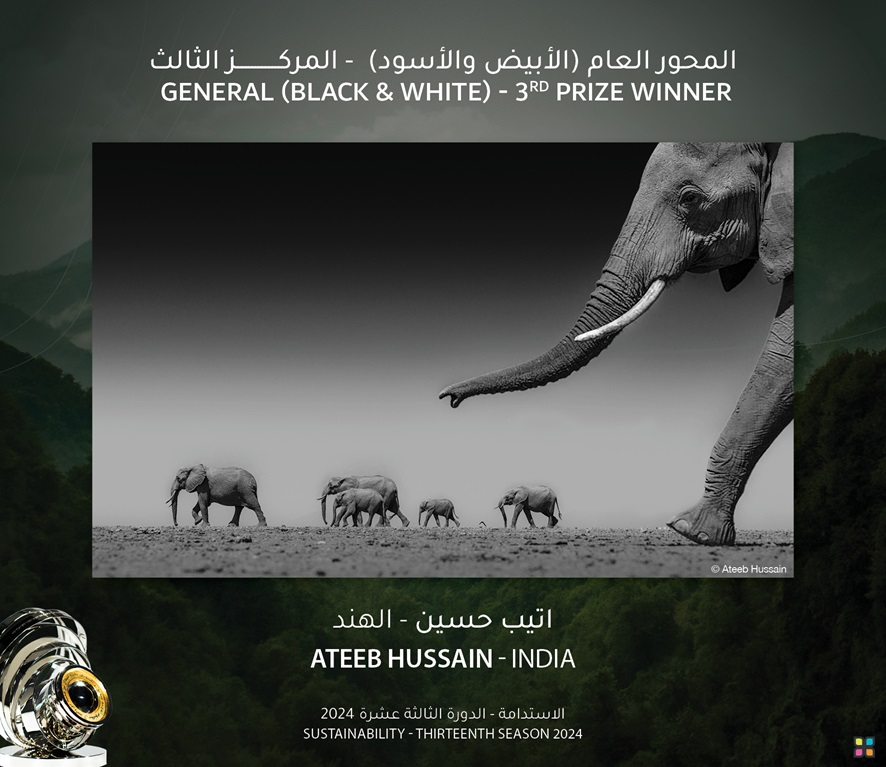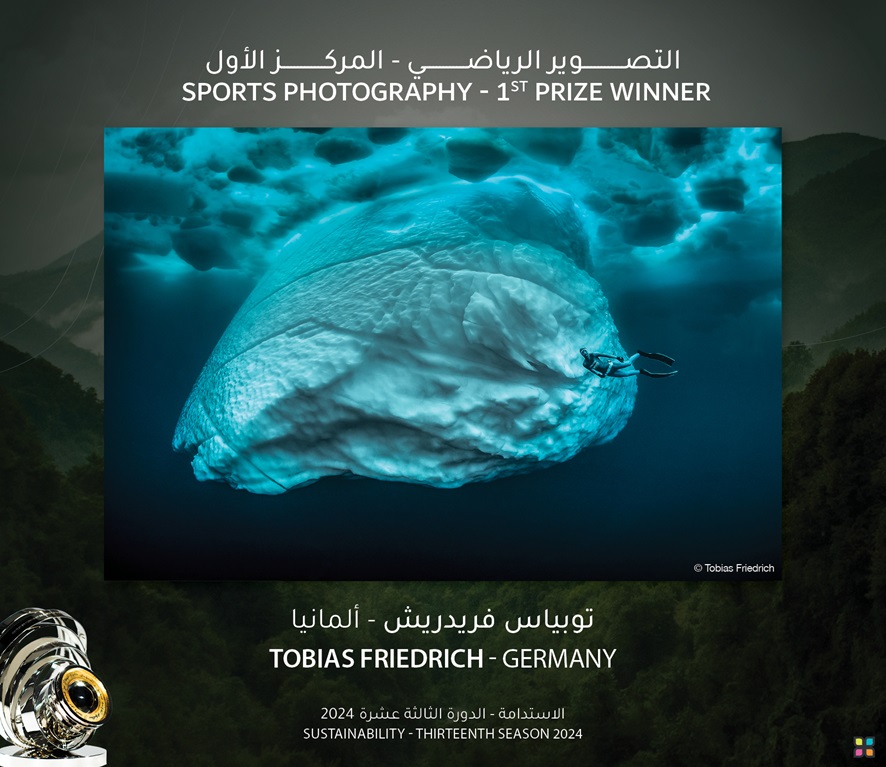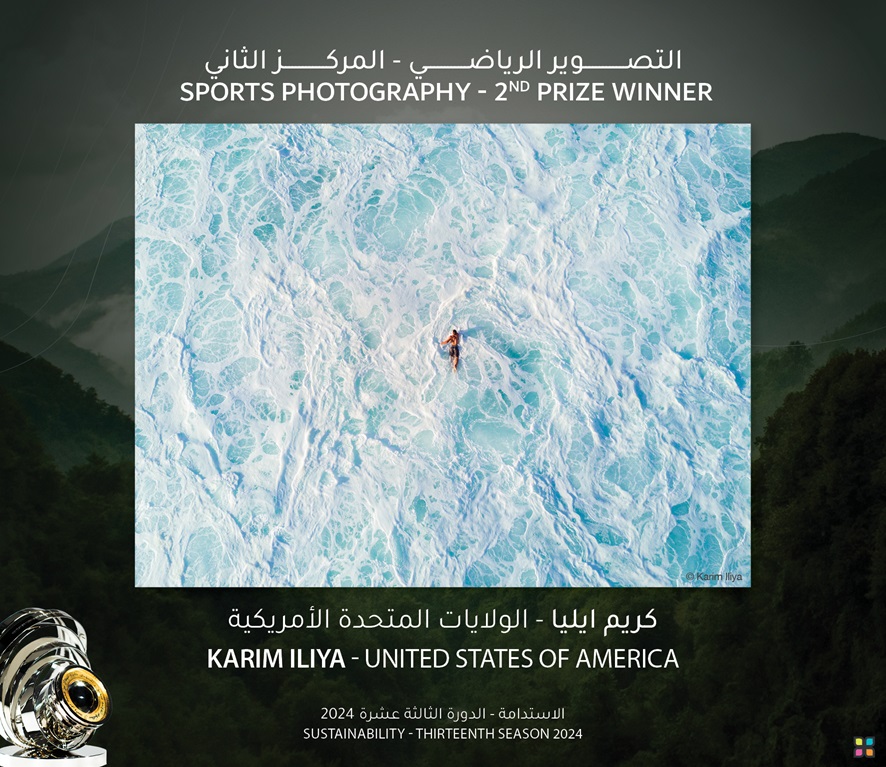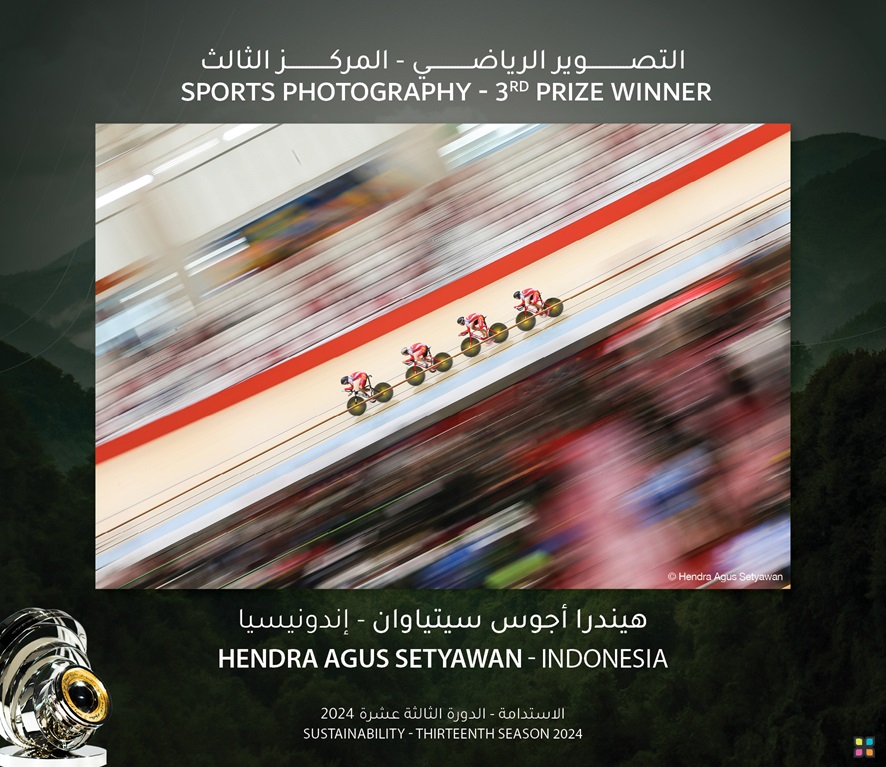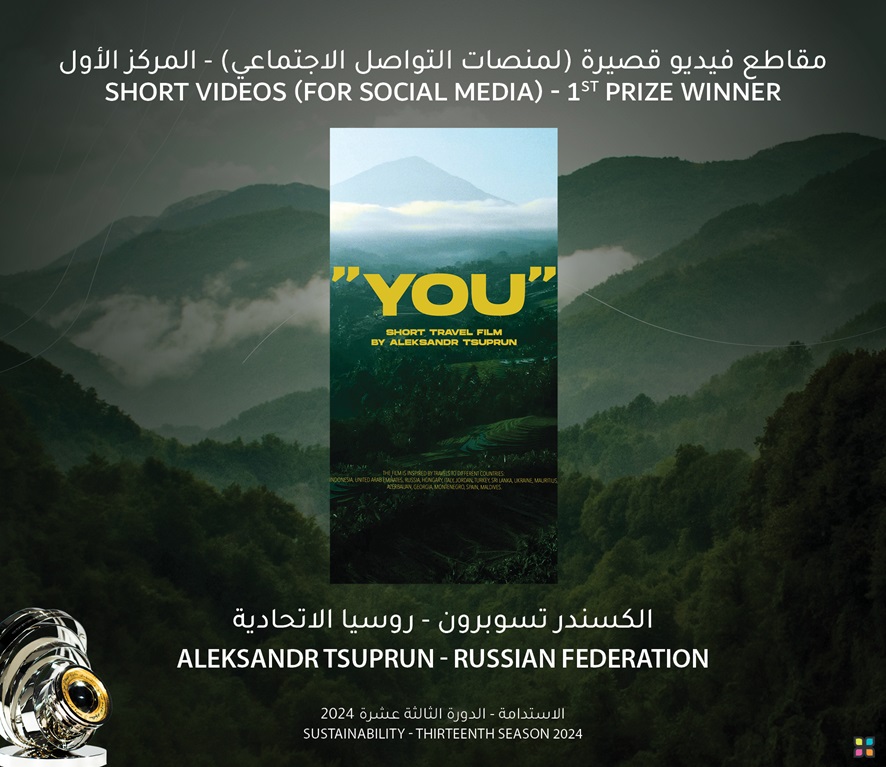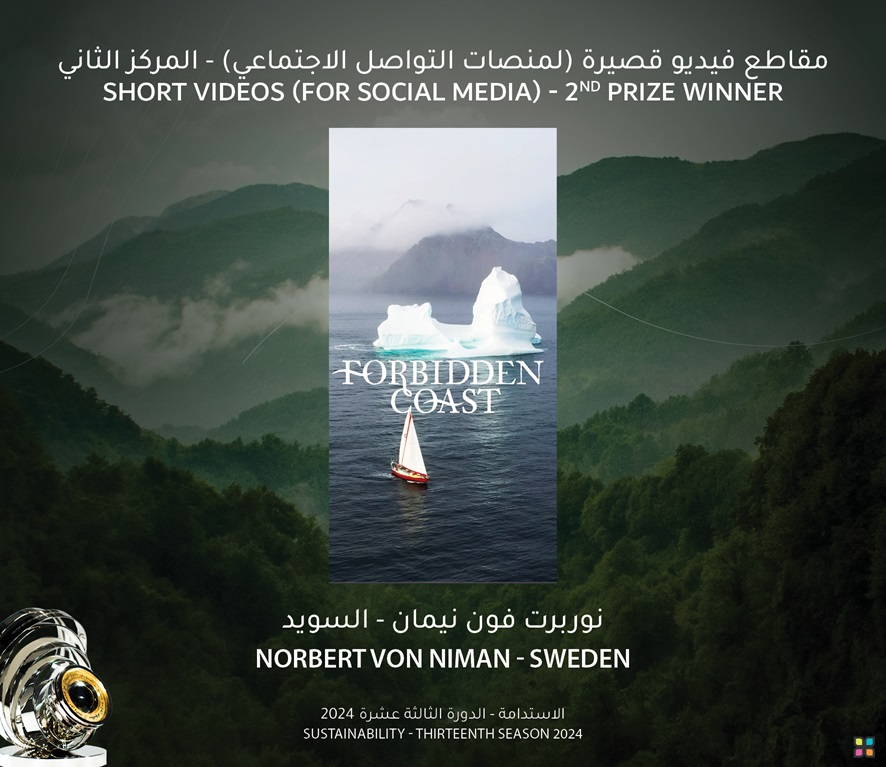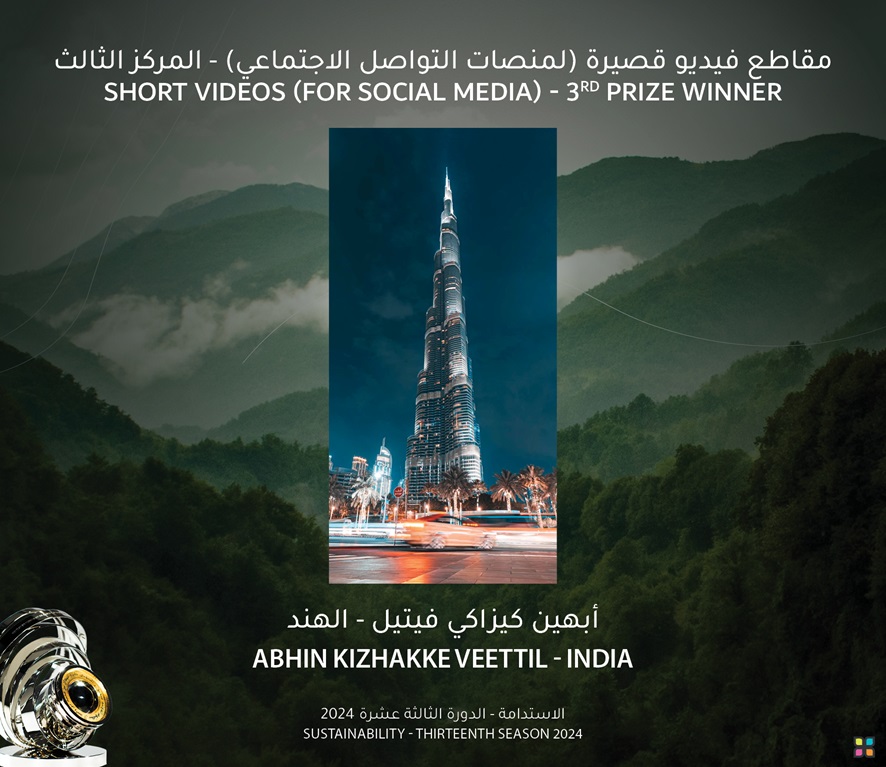Hamdan bin Mohammed bin Rashid Al Maktoum International Photography Award (HIPA) recently announced the winners of their 13th Season in Dubai with Chinese photographer Liping Cao winning the Grand Prize of $200,000 for his black-and-white image. The award was given by Her Highness Sheikha Latifa bint Mohammed bin Rashid Al Maktoum, Chairperson of the Dubai Culture and Arts Authority (Dubai Culture).
The image won the prize as it captures a poignant scene of nature and technology in harmony: towering wind turbines rise prominently on the horizon, their blades slowly rotating in the breeze, embodying the quiet power of renewable energy. Behind them, the sky is speckled with drifting clouds, creating a dynamic backdrop. The dry riverbed beneath the turbines adds depth to the image, reminding us of the importance of sustainable practices in a world facing environmental challenges.
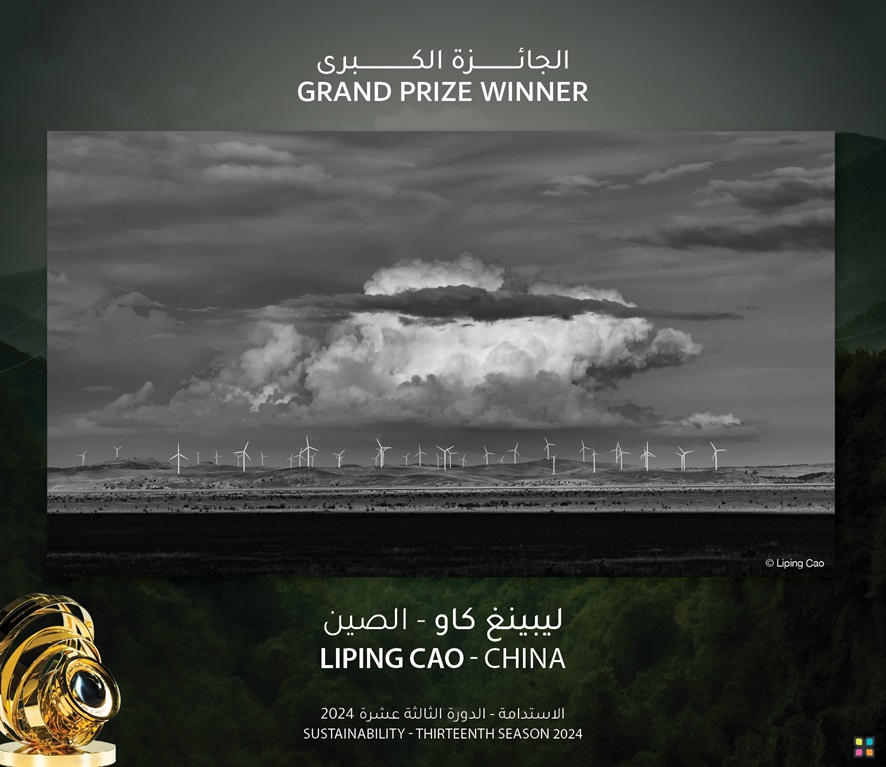
Sheikha Latifa affirmed that Dubai, with its visionary approach, is a nurturing space for innovative initiatives and awards, establishing itself as a global source of inspiration and a gathering place for creative minds and exceptional talents from diverse fields. She noted that the Hamdan bin Mohammed bin Rashid Al Maktoum International Photography Award reflects the emirate’s inspiring ethos, cultural richness, and the strength of its visual and creative arts landscape.
“This award, with its diverse categories, embodies Dubai’s ambitious vision and leadership, enhancing its position on the global stage as a magnet for photographers and creatives in general. It showcases Dubai’s ability to build bridges of communication among people and communities by honouring talented individuals who, through their creative work, tell the stories of cultures, document traditions, and convey powerful messages that reflect society and heritage,” Her Highness said.
Sheikha Latifa also highlighted that the award aligns with the UAE’s commitment to the Sustainable Development Goals, focussing in its current cycle on ‘Sustainability’, a theme that reflects the forward-thinking mindset of the award’s organisers and their conviction in the critical role of culture and the arts in advancing sustainability, thereby contributing to the well-being of societies.
Ali bin Thalith, HIPA’s Secretary General, thanked Sheikh Hamdan for his continued support of HIPA and the art of photography. “In our thirteenth year, we have extended our reach to 205 countries. What truly matters to us is the advancement of the photographer and the photography industry. His Highness’ vision for nurturing human creativity is apparent from his decision to raise the total prize purse under the award to $1 million.
More than a quarter of the winners in this season’s awards reside in the UAE, benefitting from a creative environment that stimulates innovation and competitiveness, Bin Thalith highlighted. “This reinforces the UAE’s leadership in attracting global talent and innovators,” he said.
James ‘Jimmy’ Philip Nelson, a Dutch photographer known for his work with indigenous communities, received the Photography Appreciation Award for his significant contributions to photography and projects that foster greater understanding between different cultures.he Photography Content Creator Award went to Emirati photographer Salma Ali Humaid Alsuwaidi for her pioneering work documenting the wildlife and bird species of the UAE. Her book, ‘Common Birds and Their Nests in the United Arab Emirates,’ significantly contributes to the scientific and artistic communities.
The inaugural HIPA Photographer of the Year Award was presented to Samy Al Olabi, a Syrian astrophotographer renowned for his images of celestial objects and nature photography, particularly in the dark skies of the Arabian Peninsula. He is famous for his projects photographing stars from the dark corners of the Arabian Peninsula. His work has been featured in more than 80 local and international publications.
Her Highness Sheikha Latifa bint Mohammed bin Rashid Al Maktoum, honoured the winners in the ‘Sustainability’ category. Ruijuan Huang from China took the first prize, with French photographer Virginie Ellis and Ranganathan Mukkai from India finishing second and third respectively.
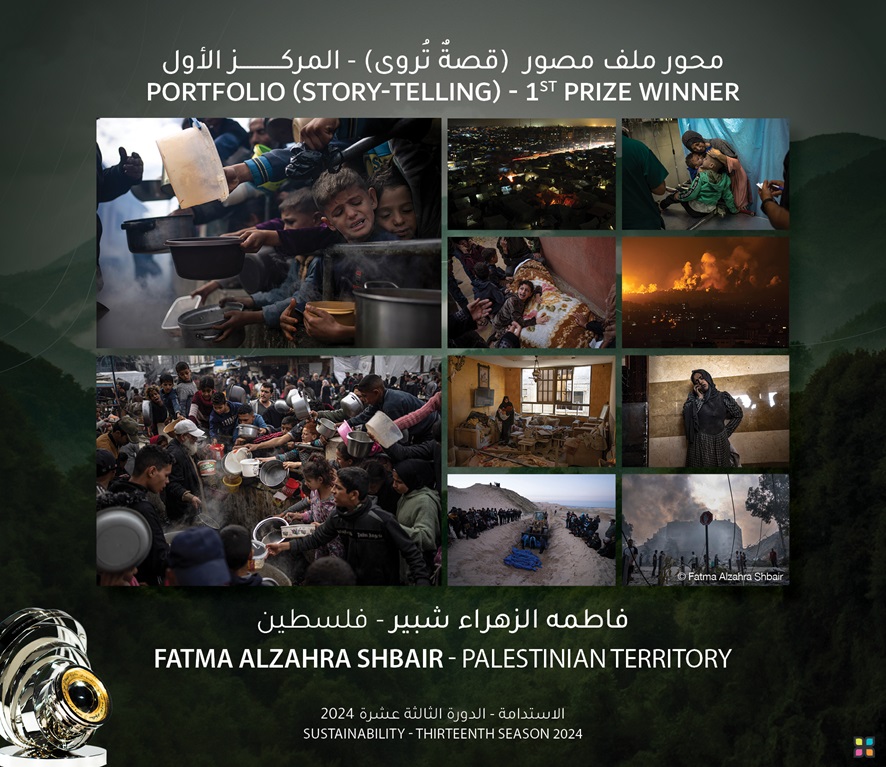
H.E. Ali Khalifa bin Thalith, HIPA Secretory General, presented the ‘General – Colour’ winners. Rahul Vishwanath Sachdev from India won first prize, followed by Youmn Mohammed Almanla from Saudi Arabia, and Ahmed Abdallah Al Housni from Oman.
In the ‘General – Black and White’ category, American photographer Renee Capozzola took the first prize, followed by Hikkaduwa Liyanage Prasantha Vinod from Sri Lanka, and Ateeb Hussain from India.
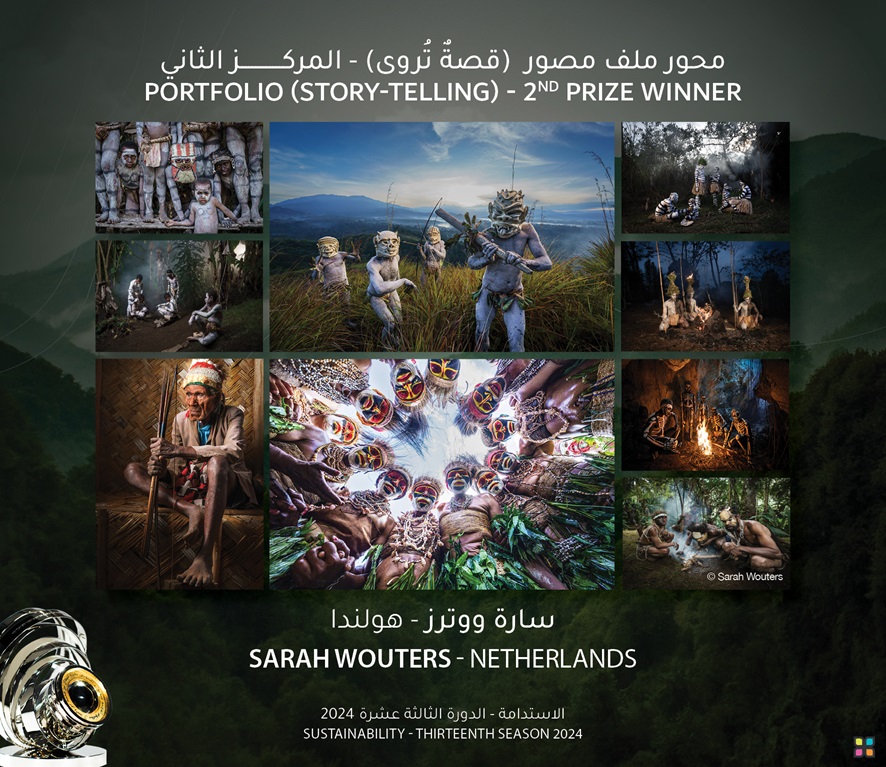
His Excellency Abdulrahman bin Mohamed Al Owais, Minister of Health and Prevention and Chairman of the Board of Trustees of HIPA, honoured the winners of the ‘Portfolio (Story-Telling)’ category, where Palestinian photographer Fatma Alzahra Shbair won first place, with Sarah Wouters from the Netherlands taking second spot and Wen Bing from China finishing third.
Her Excellency Hala Badri, Director General of Dubai Culture, presented the Sports Photography awards. Tobias Friedrich from Germany took the first prize, followed by Karim Iliya from the USA, and Hendra Agus Setyawan from Indonesia respectively.
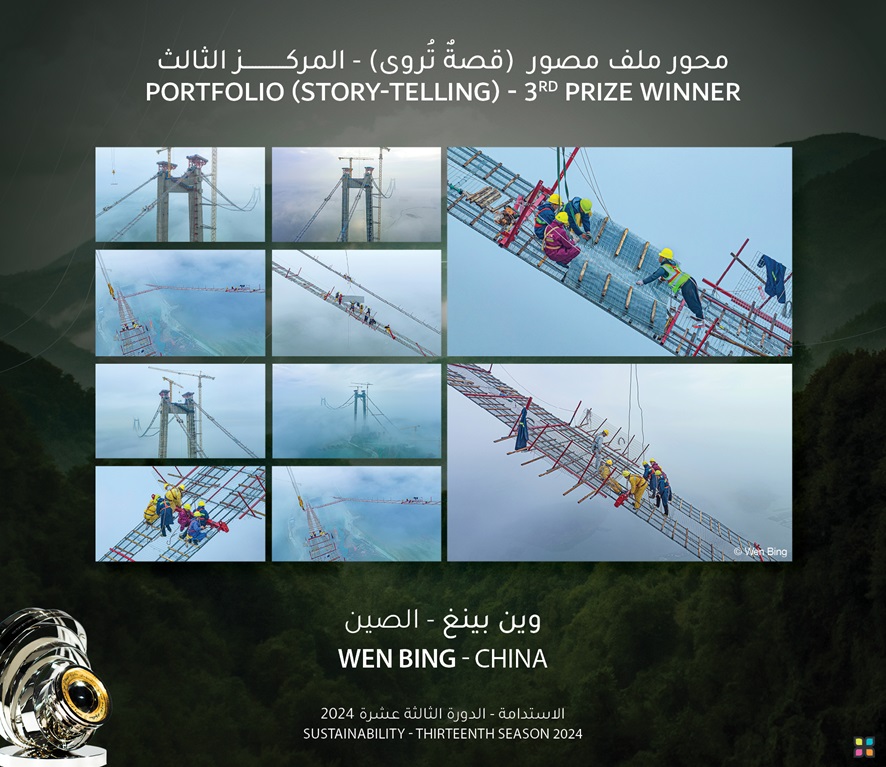
His Excellency Abdulrahman bin Mohamed Al Owais, Minister of Health and Prevention and Chairman of the Board of Trustees of HIPA , honoured the winners In the ‘Short Video (For Social Media)’ category, Aleksandr Tsuprun from the Russian Federation won first prize, followed by Norbert von Niman from Sweden, and Abhin Kizhakke Veettil from India who finished third.

